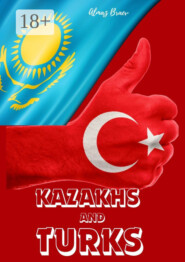По всем вопросам обращайтесь на: info@litportal.ru
(©) 2003-2024.
✖
The Third. Covid liberalism
Настройки чтения
Размер шрифта
Высота строк
Поля
ARE THERE LEVELS TO TOTALITARIANISM
How many industrial generations was Germany ahead of Russia?
From the so-called average, we can infer the population’s self-reflection level. Which level was it – zeref, zeremid, or remid?
The remid level, as we have found out, gives the informal elite of civilization a chance to stay alive.
After all, Germany still was a country of tradition, something that all nations feel as a phantom pining for the past. This manifested itself most clearly in Italian fascism. But the Italian fascists didn’tannihilate the local socialists until 1920. Russia was close in all ways to agrarian Italy. For that reason, in 1919—1920 the Italian socialists seized factories in the industrially developed central and northern Italy, following the example of Russia’s proletariat. Italy was a country of active anarchism, meaning it didn’t need the state.
With that said, Italians had spent 300 years fighting to free their homeland and unify it into a single state. The state meant ownership; the state scale, remids. Italy’s statism took the form of fascism. In
two years, all socialists, advocates of a socialist community, were killed off (with some help from the residents). That left the upper bourgeoisie, factory owners, and latifundistas pleased. The local administration sided with the fascists. In Russia, the proletariat and the peasantry followed Lenin, not Savinkov; in Italy, the former socialist Mussolini (precisely because of the Risorgimento). The Italians wanted order: they had suffered for centuries because of the lack of a single state.
The Witch-Hunt
In the Middle Ages the Inquisition hunted down witches. This kind of hunting – searching for scapegoats – is something typical of all times. Someone must be called to account for epidemics, disasters, crop failures: the practice of declaring the innocent guilty has existed since ancient times.
The Inquisition chose not to reinvent the wheel. Women didn’t love women. So what reason was there for the Inquisition to love women, even the most beautiful of them? After all, when some kind of misfortune happened in a village or even across a whole city, it was all because some woman had evoked evil spirits. This is the zeref level. It doesn’t rely on facts or need evidence. The zeref level is
one of conjectures and black thoughts, of loathing and envy.
The zeremid level is one of wider practice. This kind of hunting involves someone specific and even logic, going from the specific to the general. Even though the specific here borrows a lot from the subconscious. But the zeremids name the perpetrator’s name. They even have the temerity to call the ruler the culprit, even though they do so at the instigation of liberal refags and, often, other revolutionaries. The thing is that traditional practice has several idols – ideals it lives with as people grow old and die. When saints’ names are secularized, people, it seems, no longer have a reason to
live. But if people – soldiers, for example – don’t want to die for their king or fatherland – this level is that of zeremids. Zeremids have primitive designs. They invariably want to stay alive. That wasprecisely why the Bolsheviks lay the blame for their troubles on soldiers going to their deaths and on
the tsar and his henchmen. The tsar wasn’t a witch – he was the people’s saint, the God’s Anointed.
But they lay the blame on him all the same. This qualifies as the zeremid level, with the entire ethnos
declared guilty. This fits right in the middle of the dark tribal subconscious, which looks for the enemy
without, as in primitive times, while the enemy is actually within. Cunning? Cunning. Antisemitism
can attain a remid scale. But it is second-generation zeremids and remids that bring it to that level.
CHAPTER XI
THE OUROBOROS
You might have heard of the ancient symbol depicting a serpent eating its own tail. It’s called the ouroboros. It is held to symbolize eternity, the cyclic renewal of life. The rapid change of the state elite leads to the demise of the people.
«Between 1933 and 1935 most of the czarist engineers were rounded up. There were large-scaletransfers of people to different provinces, so they could not communicate with each other. Many innocents were executed immediately; others were banished to Siberia.»
«By the spring of 1936, almost all the young people who had received secondary or higher technical education between 1927 and 1932 had been rounded up. Thus, the regime first created a whole class
of specialists, and then, seeing in it a threat to its power, destroyed it. Before getting rid of the qualified technical elite, the party and the government prepared successors to take that elite’s place.
If they hadn’t, industrial development would have faced a dead end.»
«On graduating from the academy after two years of studies, the wunderkinds (as the old workers at our factory called them) were appointed to managerial positions as soon as the specialists who had
occupied them disappeared. This clearly planned and thought-out policy was carried out openly and rigorously for several years. That solved the problem – creating a class of «devotees to the party, truly
Soviet specialists’ (in the parlance of the slogans of that time). But the young managers lacked both experience operating machinery and theoretical knowledge, which two years at the academy could not provide. These wunderkinds had an adverse effect on factory workers secretly despising them.»
«As soon as new – truly socialist, from the party’s standpoint – workers came into the industry and thousands of others filled the rooms of industrial academies, a large-scale purge of experienced specialists began. First of all, it hit those who had been sent by the government to study abroad to replace the old engineers, who had been educated before the Revolution, and foreign specialists.
Now they were considered hopelessly tainted, especially condemned by the bourgeois influence of their association with foreign specialists. The foundation upon which the technical development of
the country developed began to disappear rapidly.»
These are excerpts from a book by a Jamaican-American toolmaker about his life in Stalin’s USSR.
Someone neither white nor red took stock of the situation as an impartial observer uninterested in politics and drew his conclusions about the regime.
As we know, such purges happened not only among engineers but also in all sectors of the government machine. Purges reached the highest establishment of the ruling party and the military, bringing the most tragic results of all. I have long included in those tragic results the number of people the USSR lost to the German attack. But who needed to purge the country of its «enemies»?
Even Stalin – the USSR leader – did not want to live in fear when Wehrmacht troops were near Moscow. He wasn’t that stupid to eliminate his military leaders so as to bring his own collapse closer.
A reason will be given here that was big enough to pull the rug out from under the omnipotent dictator, whom some ordinary people still hold in esteem to this day.
But what he did or had planned to do to leave people with no memory of the past – a crowd of devoted fanatics – is an indicator of common self-reflection. We must understand why today the state’s body, while it seems to be where it’s supposed to be, has a hydra of ever-hungry heads that fail to understand the state. Where do those heads come from?
CHAPTER XII
THERE CAN BE NO TOTALITARIANISM WITHOUT REMIDS
All totalitarian regimes share a problem no less totalitarian in its essence than they are. The conclusions about their totality are just the final point, like an ocean that opens up before everyone instead of the rivers – events – that run together in streams to form that ocean. Still, the drops making up those rivers are people. Their thoughts. At the very beginning, when they start thinking similar thoughts, no one knows yet where that might take them. And after a while this results in a regime, a manifestation of the totality of myriads of thoughts. But who are these people? And why does responsibility for that totality rest with the leaders, not the people?
Answers should be sought in the people’s similarity, of course. With time, people will gather together to form an order – first a group, then a party that brings everyone together in one place or directs them to that place. Before people assemble in a square, their thoughts will get together. And before the similarity of indignation, vexation, and negation materializes (elsewhere in the world), one needs to find the origin of this similarity. The origin of their reaction and the source of their indignation lie in tradition. Tradition. Tradition-minded people take care to first observe their rituals. And then they respond to crises, all in a similar manner. That’s what the cause of totalitarianism is. Don’t look for similarities in city residents who have lost touch with the place that, while not their birthplace, still holds their roots and is home to their relatives. Refags remember no one, making it difficult to bring them together. Their thoughts are like cockroaches scurrying on the kitchen floor. Everyone is on their own. Everyone thinks they are someone. The totality of refags is yet to merge into their own ocean, their own world order. But we are still concerned here with tradition and tradition-minded people. We are investigating why they have their own totality.
Crises don’t turn everyone into a Nazi. Many zerefs don’t really know what the essence of fascism is. What they do and think doesn’t depend on them: remids do all the thinking for them. Just to make things clear, traditional zerefs are like little kids imitating adults. They are provided with ready-made social reflexes as they would be with food products that someone else grows or makes for them.
Their ancestors are another influence. That’s why zerefs, just like all traditionalists, bring up ancestors and rely on their precepts so often. And their parents, in turn, inherited behavioral models from the parents of their parents. And so on back. That’s not to say zerefs are born conservatives. No one is born something. Rather, life itself turns, when it’s born, into a routine, monotonous ritual.
But, among all the reflection groups, the most self-aware conservatives are, of course, the zerots, or the traditional feudal elite (see my book entitled Hierarchal Man). If you look at all the groups – zerots, zerefs, remids – remids are the new elite. Teachers, lawyers, distinguished, honored artists, writers, and, needless to say, public officials. They put in a lot of their energy to appear as the new elite. They sacrificed their lives to their careers. We didn’t choose them as the new elite, or new teachers, and they didn’t put in so much effort to have someone take away all the fruits of their hard work. A career, including reflection, means work – very energy-consuming work. Some want to grow materially; others, spiritually. Ultimately, they get what they deserve: honor and respect from the public. And then a crisis comes up…
A host of inherited ghosts.
Eldest sons are much like their fathers, perhaps because they don’t want their fathers to deprive them of their inheritance. Earnestness came to be a responsibility for everyone. At any rate, all eldest sons are earnest and businesslike. When the father is not at home, every tot knows who’s holding the fort.
Вы ознакомились с фрагментом книги.
Приобретайте полный текст книги у нашего партнера:
Приобретайте полный текст книги у нашего партнера:











